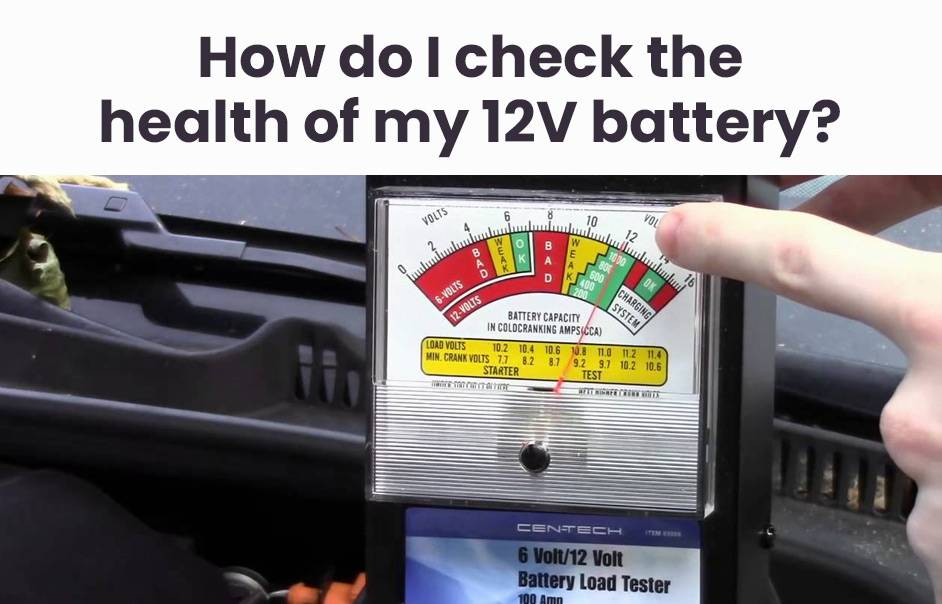In this blog post, we’ll explore the vital role 12V batteries play in powering our devices and vehicles. Understanding the optimal voltage range for these batteries is essential for their performance and longevity. Join us on this journey as we delve into battery voltage, its factors, accurate measurement, and tips for maintaining the right voltage.
Understanding Voltage and Batteries
Batteries power our devices, and understanding voltage is key to their performance. In simple terms, voltage is the force driving electrical current in a battery, measured in volts.
- Crucial Role of Voltage:
- Voltage directly impacts battery performance and lifespan.
- 12V batteries have an optimal voltage range for efficient operation, preventing underpowering or overwhelming devices.
- Variable Voltage Levels:
- Temperature, charge level, and age influence voltage levels.
- Monitoring voltage helps assess battery health and detect the need for maintenance.
- Difference from Capacity:
- Voltage measures potential energy, while capacity gauges how long a battery can sustain output.
- Understanding this difference is crucial for accurate battery assessment.
- Why Voltage Matters:
- Knowing the expected voltage for a 12V battery ensures accurate assessment of its health.
- Regular monitoring allows proactive steps for maximizing performance and ensuring longevity.
- Upcoming Exploration:
- The next section will delve into factors influencing 12V battery voltage, from internal components to external factors. Stay tuned for deeper insights!
Factors Affecting the Voltage of a 12V Battery
The voltage of a 12V battery is influenced by multiple factors. Let’s explore these key elements shaping the battery’s voltage readings.

- Temperature Impact:
- Extreme temperatures, whether hot or cold, affect battery voltage.
- High temperatures increase internal resistance, lowering voltage, while cold temperatures slow chemical reactions, also reducing voltage.
- State of Charge:
- Gradual loss of charge over time decreases voltage.
- Recharging becomes necessary when voltage reaches a critical point due to usage.
- Age and Overall Condition:
- Aging batteries undergo chemical reactions, decreasing capacity and lowering voltage.
- Overall condition plays a crucial role in determining the battery’s voltage level.
- Electrical Load Influence:
- Connected devices, especially high-power ones, impact the battery’s voltage.
- Power-hungry devices like car starters or inverters can cause temporary voltage drops until equilibrium is restored.
In conclusion, various factors, including temperature, state of charge, age, overall condition, and electrical loads, contribute to the voltage fluctuations in a 12V battery.
Optimal Voltage Range for a 12V Battery
Optimal Voltage Range for a 12V Battery:
- Ideal Voltage Reading:
- A fully charged 12V battery should read between 12.6 to 12.8 volts.
- This range signifies optimal condition, ensuring reliable performance.
- Low Voltage Alert:
- If the voltage drops below 11 volts, the battery needs recharging.
- A reading above 13 volts may indicate overcharging or issues with the charging system.
- Crucial for Longevity and Efficiency:
- Maintaining the battery within the optimal voltage range is essential.
- Prevents damage from undercharging or overcharging, extending the battery’s lifespan.
- Regular Maintenance is Key:
- Use a multimeter or voltmeter to monitor voltage levels regularly.
- Prompt action is necessary if significant fluctuations outside the optimal range are observed.
In conclusion, keeping your 12V battery within the recommended voltage range, through regular monitoring and maintenance, ensures maximum performance and extends its overall lifespan, saving time and money in the long run.
How to Measure the Voltage of a 12V Battery
How to Measure the Voltage of a 12V Battery:
- Get the Right Tools:
- Use a multimeter to measure the voltage of your 12V battery.
- Ensure the multimeter is set to DC voltage mode.
- Locate Terminals:
- Identify the positive (+) and negative (-) terminals on the battery.
- The positive terminal usually has a plus sign (+).
- Connect the Multimeter:
- Attach the black (negative) probe to the negative terminal.
- Connect the red (positive) probe to the positive terminal.
- Turn on the Multimeter:
- Power on the multimeter and check the reading on its display.
- A healthy battery should show a reading close to or slightly above 12 volts.
- Consider Temperature:
- Temperature can slightly affect readings, so measure when the battery stabilizes at room temperature.
- Regular Monitoring:
- Keep track of your battery’s voltage regularly for informed insights into its state of charge and overall health.
- This practice ensures optimal performance and prevents unexpected issues.
By following these steps, you can easily measure and monitor the voltage of your 12V battery, promoting its health and performance.
Signs of Low or High Voltage in a 12V Battery
Understanding signs of low or high voltage in your 12V battery is crucial for its health. Recognizing irregularities early on can prevent potential issues and extend the battery’s lifespan.

- Low Voltage Signs:
- Slow cranking engine during startup signals insufficient power.
- Dimming headlights indicate the battery struggles to provide enough power.
- High Voltage Indicators:
- Flickering lights or device malfunctions connected to the battery suggest excessive voltage.
- A strong sulfur smell may indicate overcharging and potential damage.
- Regular Voltage Checks:
- Use a multimeter or voltmeter designed for automotive batteries to ensure accurate readings.
- Follow safety precautions when handling electrical equipment.
By staying vigilant and addressing these signs promptly, you can maintain optimal performance and prolong the lifespan of your 12V battery. Keep those volts in check for reliable performance!
Tips for Maintaining Proper Voltage in a 12V Battery
Maintaining proper voltage in your 12V battery is essential for optimal performance. Here are practical tips to ensure your battery stays in the best condition:
- Inspect and Clean Terminals:
- Regularly check for dirt and corrosion on battery terminals.
- Clean with a baking soda-water mixture and a wire brush.
- Avoid Deep Discharges:
- Minimize fully draining the battery to extend its lifespan.
- Keep Battery Fully Charged:
- Use a smart charger to maintain optimal charge levels without overcharging.
- Charge the battery when not in use, especially for vehicles and equipment.
- Check for Parasitic Drains:
- Use a multimeter to identify and address devices causing excessive power drain.
- Monitor Electrolyte Levels:
- For flooded lead-acid batteries, check and maintain electrolyte levels following guidelines.
- Protect from Extreme Temperatures:
- Park vehicles out of direct sunlight to avoid high temperatures.
- Consider insulation during colder months to prevent capacity reduction.
- Invest in Quality Batteries:
- Opt for batteries from reputable brands for better construction and longer lifespan.
By consistently following these tips, you can keep your 12V battery in optimal condition, ensuring proper voltage levels and maximizing its longevity. Regular voltage measurement and professional assistance when needed contribute to a smoothly running 12V system.


